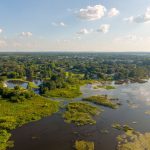
April 2025 Regulatory Insights: Navigating the Changing Landscape of Mitigation Banking
As we move through the second quarter of 2025, several major regulatory decisions are taking shape, each with the potential to significantly impact how we approach environmental permitting, credit sales, and long-term mitigation banking strategies.
I believe staying ahead of these changes is key to protecting your investments and continuing our shared mission of preserving critical ecosystems. Here are four important updates to keep on your radar:
1. Redefining “Waters of the United States” (WOTUS)
Summary:
The U.S. Supreme Court’s decision in Sackett v. EPA narrowed the federal definition of WOTUS, now limiting protections to wetlands with a direct, continuous surface connection to navigable waters.
What This Means:
Fewer wetlands may now fall under federal jurisdiction, potentially reducing the regulatory requirement for federal mitigation credits. But with that shift, the role of state and local agencies becomes more important than ever. We may start to see new state-level policies or programs step in to fill the gap—and that could bring new opportunities for mitigation banking at the state level.
Next Steps:
2. Section 404 Permitting in Florida (FDEP Assumption)
Summary:
3. Endangered Species Act: “Take” vs. “Harm” Redefinition
Summary:
Proposed changes under the ESA would redefine “harm” to exclude habitat modification unless there is clear intent to harm an individual species.
What This Means:
If adopted, this could reduce the use of species credits by limiting protections for habitat loss. For those involved in conservation banking, it’s important to watch this closely because if fewer impacts qualify as “harm,” the demand for mitigation could be affected. Still, I believe long-term conservation strategies will remain essential as pressure on biodiversity grows.
4. Florida’s Pending Mitigation Banking Legislation (SB 492 / HB 1175)
Summary:
As of April 11, both SB 492 and HB 1175 have passed through the Legislature and are heading toward final approval. These bills are designed to address mitigation credit shortages while introducing new rules around credit release schedules, out-of-service-area credit use, and annual reporting.
What This Means:
For mitigation bankers, these bills could bring more predictability to credit release timelines and expand flexibility in high-demand watersheds. But they also introduce multipliers for proximity and require more transparency with annual credit reporting. It’s a significant shift and one I’ve been following closely in partnership with FAMB and other stakeholders.
You can read the bills and analysis below:
Final Thoughts
These regulatory updates represent both challenges and opportunities. The decisions being made now will shape the future of mitigation banking not just in Florida, but nationally. As always, I encourage bank owners, developers, and consultants to stay informed, stay engaged, and reach out if you have questions about how these changes could affect your projects or property.
If you’d like help evaluating your options or planning for what’s next, I’m here to help.
—
Victoria K. Bruce
CEO & Founder
The Mitigation Banking Group, Inc.
📧 victoria@mitigationbankinginc.com
📞 (407) 960-5787






